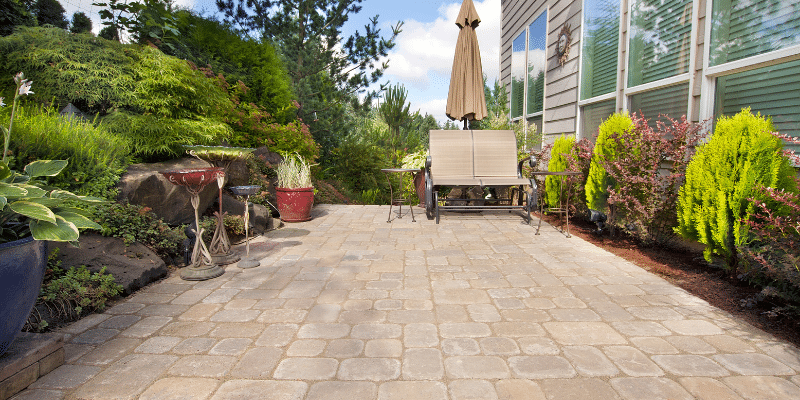hello world!

If you’re dreaming of paving a beautiful patio that stands up to Ontario’s tough weather, porcelain pavers might be your new best friend. They combine modern design with serious durability, staying strong through snow, salt, and sunshine without losing their good looks.
In this porcelain pavers guide, we’ll walk you through what makes these outdoor tiles so special, how they compare to other materials, what installation looks like, and where they perform best. Whether you’re upgrading a backyard patio, building a rooftop retreat, or refreshing a pool deck, porcelain pavers make it easy to create a space that’s stylish, practical, and built to last.
Porcelain pavers are engineered for strength, style, and weather resistance. Each tile is fired at extremely high temperatures to create a vitrified surface that is nearly waterproof and highly resistant to cracking or chipping. With a water absorption rate below 0.5%, they shrug off Ontario’s freeze-thaw cycles with ease, making them a favourite choice for patios, pool surrounds, and rooftop terraces.
You can find porcelain pavers in countless colours, textures, and sizes that mimic natural stone, concrete, or even wood. This makes it easy to design a space that feels modern and clean or rustic and relaxed without worrying about staining or fading.
Porcelain pavers are remarkably durable and handle surface wear, stains, and fading better than most patio materials. Their dense structure keeps them looking new for years, even in high-traffic outdoor areas.
Ontario’s weather can be unpredictable, but porcelain pavers stay strong through it all. Their low absorption rate prevents cracking from freeze-thaw cycles, ensuring your patio looks sharp every spring.
Forget yearly sealing or power washing. A simple sweep and the occasional rinse with mild soap are all porcelain pavers need to keep their finish looking fresh.
Consistency is porcelain’s secret strength. Each tile offers precise colour and texture control, giving homeowners the option to create sleek modern patios or natural stone looks without variation or maintenance concerns.
A properly compacted gravel base (100–150 mm) ensures stability. Add a thin bedding layer of sand and slope the patio 2% away from structures for proper drainage.
Most residential patios use the dry-lay method, placing pavers directly on the prepared base. This allows for easy replacement and adjustment without adhesives.
Edge restraints like aluminum or concrete curbs prevent shifting. Fill joints with fine sand or manufacturer-approved grout. Porcelain generally does not require sealing.
Porcelain pavers are a premium material. Installed costs typically fall between high-end concrete pavers and natural stone. While the upfront investment may be higher, low maintenance and durability often offset long-term expenses.
Pros
Cons
At Hamilton Builders’ Supply, we make it easy to bring your patio plans to life. Our yards across Hamilton, Burlington, St. Catharines, Winona, and beyond carry a full selection of porcelain pavers designed for Ontario weather. Whether you’re building a small backyard retreat or a spacious rooftop terrace, our team can help you choose the right size, style, and finish for your space.
Need a hand figuring out quantities or delivery logistics? Our knowledgeable staff is happy to walk you through your options and coordinate materials so your project runs smoothly from start to finish.
Visit your nearest HBS location or contact us online for a no-pressure quote and expert advice. Let’s turn your outdoor vision into a space that lasts for years to come.